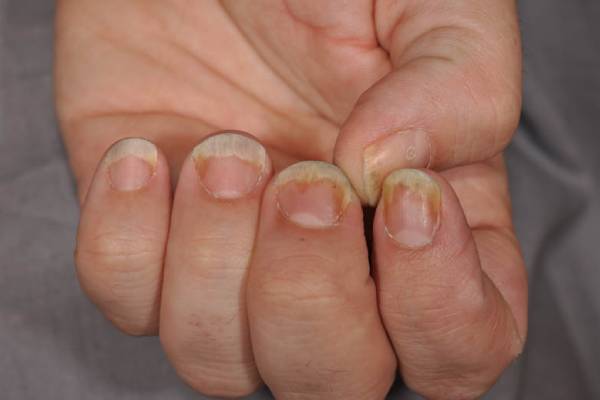What is a Nail Fungus Infection?
Nail fungus is a common condition that begins as a white or yellow spot under the tip of your fingernail or toenail. As the fungal infection goes deeper, nail fungus may cause your nail to discolor, thicken, and crumble at the edge. It can affect several nails.
If your condition is mild and not bothering you, you may not need treatment. If your nail fungus is painful and has caused thickened nails, self-care steps and medications may help. But even if treatment is successful, nail fungus often comes back.

Types of Fungal Nail Infections
There are four main kinds of fungal nail infections. Each looks slightly different:
- Distal or lateral subungual onychomycosis. This is the most common kind. It results from a fungus called a dermatophyte. You can get it in your fingernails or toenails. It starts in the nail bed, underneath the nail. You’ll see a yellowish colored area that spreads from the edges of the nail to the center and places where it comes apart from the nail bed.
- White superficial onychomycosis. This is less common and only affects the nail surface, mainly on your toenails. It starts as white spots, which become powdery and cause the nail to crumble.
- Proximal subungual onychomycosis. This appears first as white spots in the center of the nail bed at the cuticle. They move outward as the finger or toenail grows. It’s rare and usually affects people who have immune system problems, like HIV infection.
- Candidal onychomycosis. Yeast causes this infection that usually affects your fingernails. The area around the nails is often swollen and inflamed, and the nails may come off entirely. It tends to happen to nails that have been damaged by an injury or another infection.
Symptoms
You may have nail fungus if one or more of your nails are:
- Thickened
- Whitish to yellow-brown discoloration
- Brittle, crumbly, or ragged
- Distorted in shape
- A dark color, caused by debris building up under your nail
- Smelling slightly foul
Nail fungus can affect fingernails, but it’s more common in toenails
Treatment
Treating nail fungus infections can be a long and expensive process. There are oral antifungal medications, topical ointments, and alternative therapies. Over the counter creams and ointments are available, but they have not proved very effective.
Oral medications for nail fungus infection include:
- terbinafine (Lamisil)
- itraconazole (Sporanox)
- fluconazole (Diflucan)
These typically take up to 4 months before fully replacing the infected nail with an uninfected nail.
In some extreme cases, a physician will opt to remove the entire nail.
Prevention
Preventing nail fungus infections requires hand and foot hygiene. Some suggestions include:
- keeping nails short, dry, and clean
- wearing socks that breathe, usually synthetic
- using antifungal sprays or powders
- wearing rubber gloves to avoid overexposure to water
- refraining from picking or biting nails
- wearing shoes or sandals in public places and pools
- ensuring that your manicure or pedicure salon properly sterilizes tools
- using artificial nails and nail polish less often
- washing hands after touching infected nails
- avoiding sharing shoes and socks


